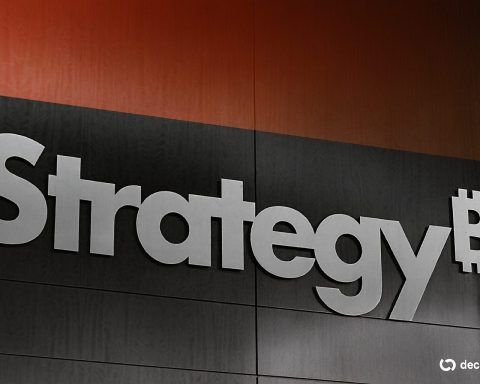From cross‑border stablecoin transfers to organized crime crackdowns, Latin America’s biggest economy is rapidly rewriting the rules for crypto.
BRASÍLIA / SÃO PAULO – November 20, 2025
Brazil is moving at breakneck speed to pull its booming crypto market into the heart of its financial and legal system.
In less than two weeks, policymakers have:
- Floated a new tax on cross‑border payments made with cryptocurrencies and stablecoins; [1]
- Sent a bill to Congress to allow the state to sell seized Bitcoin and other crypto assets, even before criminal trials are over; [2]
- Finalised long‑awaited virtual asset service provider (VASP) rules, imposing bank‑style licensing, capital and compliance standards on exchanges and other crypto firms. [3]
Taken together, the measures signal one of the most aggressive regulatory pivots toward crypto anywhere in the emerging‑market world—and they could fundamentally change how Brazilians use stablecoins and other digital assets at home and across borders.
Why Brazil is tightening the screws on crypto now
Brazil’s crypto market is large, fast‑growing and unusually dominated by stablecoins.
According to federal tax authority data cited by officials, crypto transactions reached 227 billion reais (around $42.8 billion) in the first half of 2025, up 20% from the same period a year earlier. About two‑thirds of that volume involved USDT, the dollar‑pegged stablecoin issued by Tether, while Bitcoin accounted for just 11%. [4]
That mix tells regulators two things:
- Crypto in Brazil is being used less as a speculative bet and more as a dollar rail—a cheap way to hold and move dollars, especially via stablecoins.
- Stablecoins are increasingly used to pay for imports, move wealth offshore and bypass traditional foreign‑exchange (FX) channels, raising alarm bells about tax evasion, money laundering and capital flight.
At the same time, Brazil is battling powerful organized crime factions that have eagerly adopted crypto to move funds and store profits, prompting high‑profile police operations and political pressure for tougher tools. [5]
Against that backdrop, the central bank and the Finance Ministry have launched a coordinated push: classify more crypto activity as formal FX transactions, tax it, and give law enforcement clearer powers over digital assets.
The new tax in the works: IOF on cross‑border crypto payments
The most immediately controversial idea is a proposal to extend Brazil’s IOF (Imposto sobre Operações Financeiras) tax to certain cross‑border payments made with crypto.
Closing the “stablecoin loophole”
Right now, if a Brazilian company pays an overseas supplier using a stablecoin like USDT instead of going through the banking system, that transaction typically avoids the IOF levied on FX operations, though income tax may still apply on investment gains. [6]
New rules published this month by the Banco Central do Brasil (BCB) changed the game:
- Starting in February 2026, any purchase, sale or exchange of fiat‑pegged stablecoins will be treated as a foreign‑exchange transaction.
- The same classification will apply to international payments or transfers using virtual assets, including those that settle card purchases or move funds to and from self‑custody wallets. [7]
On top of that, the federal tax authority has expanded reporting requirements to include foreign crypto service providers with Brazilian users, giving authorities better visibility into flows that previously happened in the shadows. [8]
With that legal foundation in place, the Finance Ministry is now studying how to apply IOF to these newly defined FX‑style crypto operations, according to officials quoted by Reuters. [9]
Revenue pressures and enforcement worries
Although officials insist the move is primarily about avoiding regulatory arbitrage between stablecoin rails and traditional FX, the fiscal upside is hard to ignore. [10]
Brazil is under intense pressure to meet its budget targets, and authorities estimate that the government may be losing over $30 billion a year in tax revenue from imports paid via crypto transfers that dodge customs duties and FX taxes. In one example cited by a Federal Police official, an importer might formally declare only 20% of a shipment’s value and secretly send the remaining 80% via USDT, bypassing normal controls. [11]
If IOF is extended to stablecoin‑based transfers, cross‑border crypto payments would start to resemble bank‑mediated FX transactions from a tax perspective—shrinking the advantage of using stablecoins for trade and remittances, and forcing more activity back into regulated channels.
Selling seized Bitcoin: Bill 5.582/2025 and the “anti‑faction” push
In parallel with the tax debate, President Luiz Inácio Lula da Silva has sent Bill 5.582/2025 to Congress, a proposal that would allow financial institutions to sell seized cryptocurrencies like Bitcoin before criminal cases are resolved. [12]
Hitting organized crime “in the wallet”
The bill is part of a broader “anti‑faction” package targeting powerful gangs such as Comando Vermelho, one of Brazil’s most notorious criminal organizations. [13]
Key elements of the proposal include:
- Treating seized crypto like foreign currency, checks or securities, which authorities can already liquidate in advance to preserve value.
- Allowing early sale of digital assets seized during investigations, instead of waiting for final court rulings that can take years.
- Directing proceeds into accounts controlled by the judiciary or government, so assets are not left sitting in volatile tokens that could crash—or skyrocket—while cases drag on. [14]
Officials argue the aim is to “hit gangs where it hurts: their wallets”, by dismantling the financial infrastructure that empowers criminal factions. The timing is notable: the bill came days after a massive Rio de Janeiro police operation left over a hundred people dead, most of them alleged gang members. [15]
Legal and human‑rights questions
The bill also raises serious due‑process questions:
- What happens if a suspect is later acquitted? The proposal doesn’t clearly spell out how to compensate individuals whose crypto was sold in advance and possibly lost value. [16]
- Critics worry that premature liquidation of assets could erode the presumption of innocence, especially in complex cases where ownership or source of funds is disputed.
Even so, the bill has been placed under urgent consideration, meaning Congress must vote on it by December 18, 2025, keeping pressure high through the end of the year. [17]
If passed, Brazil would join a small but growing group of countries that treat seized crypto as something to be quickly monetised, not held indefinitely on government wallets.
Inside Brazil’s sweeping new VASP regulations
While the tax and seizure debates dominate headlines, the foundation of Brazil’s crypto overhaul lies in the Central Bank’s new framework for Virtual Asset Service Providers (VASPs)—known in Portuguese as Sociedades Prestadoras de Serviços de Ativos Virtuais (SPSAVs).
On November 12, the BCB approved its most comprehensive crypto rules to date, setting the stage for bank‑style oversight of exchanges, brokers and custodians. [18]
Bank‑style obligations for crypto firms
According to the framework, all VASPs operating in Brazil will have to:
- Obtain authorization from the Central Bank, joining a formal licensing regime;
- Meet governance and risk‑management standards similar to those required of traditional financial institutions;
- Implement robust consumer‑protection, cybersecurity, and anti‑money‑laundering (AML) / counter‑terrorist‑financing (CFT) controls;
- Report a wide range of international crypto transactions, including transfers to self‑custody wallets. [19]
Foreign operators will have to set up a Brazilian entity and migrate local business onshore if they want to keep serving the market. Firms that fail to secure authorization will effectively be cut off. [20]
Steep capital requirements and transaction caps
The rules also introduce significant capital requirements:
- Minimum capital starts at 10.8 million reais (roughly $2 million) and can rise to 37.2 million reais for firms engaged in more complex or higher‑risk activities. [21]
This is a serious threshold for smaller startups, and it sits above some of the levels floated during the public consultation phase, underscoring the Central Bank’s preference for well‑capitalised players. [22]
Additionally, the framework folds parts of the crypto sector under foreign‑exchange regulation:
- Purchases and sales of fiat‑pegged stablecoins now count as FX operations.
- Crypto‑based international transfers and settlements also fall under FX oversight.
- Transfers involving an unauthorised counterparty are capped at US$100,000 per transaction. [23]
In a press conference, Central Bank regulation director Gilneu Vivan said the measures are aimed squarely at reducing scams, fraud and money laundering in a market that depends heavily on complex technology and has attractive channels for illicit flows. [24]
Tight timeline: February 2026 and beyond
Implementation will move quickly:
- The resolutions take effect in February 2026.
- Companies have nine months to adapt, including meeting capital, governance and compliance requirements.
- Those that still don’t qualify must cease operations in Brazil by November 2026. [25]
For the country’s crypto industry, 2026 will be a “survival of the fittest” year.
Why incumbents win—and smaller crypto startups are nervous
Although the new VASP framework is presented as technology‑neutral, its structure clearly favours firms that already look and behave like banks or large financial institutions.
A widely shared analysis in the Brazil Crypto Report newsletter summed it up bluntly: the new rules give big incumbents a “systematic advantage” over smaller exchanges and startups. [26]
Here’s why:
- Capital requirements: Raising millions of reais in equity is a hurdle for lean, early‑stage crypto ventures, but less so for established banks or well‑funded exchanges.
- Compliance and governance: Larger institutions already maintain AML/CFT, cyber and risk‑management teams; smaller players will have to build these capabilities from scratch.
- Local entity requirement: Global exchanges that choose to comply are likely to set up robust Brazilian subsidiaries, placing additional competitive pressure on native startups that lack international backing. [27]
Credit‑rating firm Fitch Ratings has described the Central Bank’s VASP resolutions as positive for long‑term market development, noting that clearer rules can encourage institutional participation and reduce systemic risks. [28]
But in the short term, the market is bracing for consolidation:
- Stronger, better‑capitalised platforms are expected to gain market share.
- Smaller exchanges may merge, pivot to niche services, or exit the Brazilian market altogether.
- Traditional banks could become major gateways to regulated crypto products, including tokenised deposits, stablecoin rails and Bitcoin‑linked investment offerings.
What this means for Brazilian users and investors
For ordinary Brazilians and local businesses, the new regime will change both the cost and the experience of crypto.
Cross‑border payments and remittances
If IOF is extended to stablecoin‑based transfers, sending money abroad—or receiving funds from overseas—via USDT or similar tokens will no longer be a tax‑free workaround compared to wiring through a bank. [29]
Users can expect:
- Higher effective costs for some international stablecoin payments;
- More stringent identity checks (KYC) when using regulated platforms;
- Tighter monitoring of transfers to self‑custody wallets, especially when they involve foreign counterparties. [30]
That could hurt some of the very use cases that fuelled Brazil’s stablecoin boom, such as:
- Small importers paying suppliers in Asia or the U.S.;
- Freelancers and remote workers getting paid in stablecoins;
- Families using USDT as an informal, dollar‑linked savings account.
Crime, privacy and enforcement
The seized‑crypto bill and tougher VASP oversight will significantly expand the state’s reach over digital assets tied to criminal investigations.
- For law‑abiding users, this may translate into more intrusive questions from exchanges and stricter rules on large transfers.
- For criminal groups, the combination of better reporting, VASP licensing and early liquidation of seized assets will make it harder to hide and store large crypto holdings on regulated platforms. [31]
Still, enforcement will be a game of cat‑and‑mouse. Some illicit actors are likely to shift to privacy‑focused tools or unregulated offshore venues, even as authorities gain new levers domestically.
Investor confidence and market maturity
On the positive side, Brazil’s regulatory sprint could:
- Boost confidence among institutional investors, who have been wary of unclear rules;
- Encourage tokenisation and other regulated digital‑asset products offered by banks and brokerages;
- Help Brazil position itself as a regional hub for compliant crypto innovation, especially if rules prove workable in practice.
For serious investors, the story is no longer “Is crypto legal in Brazil?” but rather “Under which license, at which tax cost, and via which regulated channel?”
Key dates and milestones to watch
For anyone exposed to Brazil’s crypto market—users, companies or global investors—several dates now matter:
- November–December 2025
Congress debates Bill 5.582/2025, the “anti‑faction” package that includes early sale of seized crypto. Under urgent procedure, a vote is required by December 18, 2025. [32] - Early 2026 (date to be defined)
The Finance Ministry and tax authority are expected to publish detailed guidance on how IOF and other taxes will apply to newly classified FX‑style crypto transactions. [33] - February 2026
The Central Bank’s VASP framework and FX‑classification rules for stablecoins and international crypto transfers enter into force, launching the formal licensing era for SPSAVs. [34] - November 2026
Final deadline for unlicensed or non‑compliant crypto firms to wind down operations in Brazil. After this date, operating outside the new regime will effectively mean operating illegally. [35]
Brazil’s big crypto reset
Brazil’s message to the global crypto industry is clear: if you want access to one of the world’s most dynamic emerging markets, you’ll have to play by bank‑grade rules.
- Stablecoins will be treated as serious financial instruments, not grey‑area payment hacks.
- Cross‑border transfers will sit inside the same FX and tax architecture as other flows.
- Exchanges and custodians will either become fully regulated financial firms—or disappear from the Brazilian landscape.
For users, that means less regulatory ambiguity but also less freedom to operate in the shadows. For incumbents—from big local exchanges to global platforms willing to invest in compliance—it is an opportunity to cement their lead.
As of November 20, 2025, Brazil is not banning crypto. Instead, it is re‑wiring it into the heart of its financial system, on terms set by Brasília—not by the blockchain.
References
1. www.reuters.com, 2. www.coindesk.com, 3. cryptonews.com.au, 4. www.reuters.com, 5. www.coindesk.com, 6. www.reuters.com, 7. cryptonews.com.au, 8. www.reuters.com, 9. www.reuters.com, 10. www.reuters.com, 11. www.reuters.com, 12. www.coindesk.com, 13. www.coindesk.com, 14. www.coindesk.com, 15. www.coindesk.com, 16. www.coindesk.com, 17. www.coindesk.com, 18. cryptonews.com.au, 19. cryptonews.com.au, 20. cryptonews.com.au, 21. cryptonews.com.au, 22. cryptonews.com.au, 23. cryptonews.com.au, 24. cryptonews.com.au, 25. cryptonews.com.au, 26. www.linkedin.com, 27. cryptonews.com.au, 28. www.fitchratings.com, 29. www.reuters.com, 30. cryptonews.com.au, 31. www.coindesk.com, 32. www.coindesk.com, 33. www.reuters.com, 34. cryptonews.com.au, 35. cryptonews.com.au










